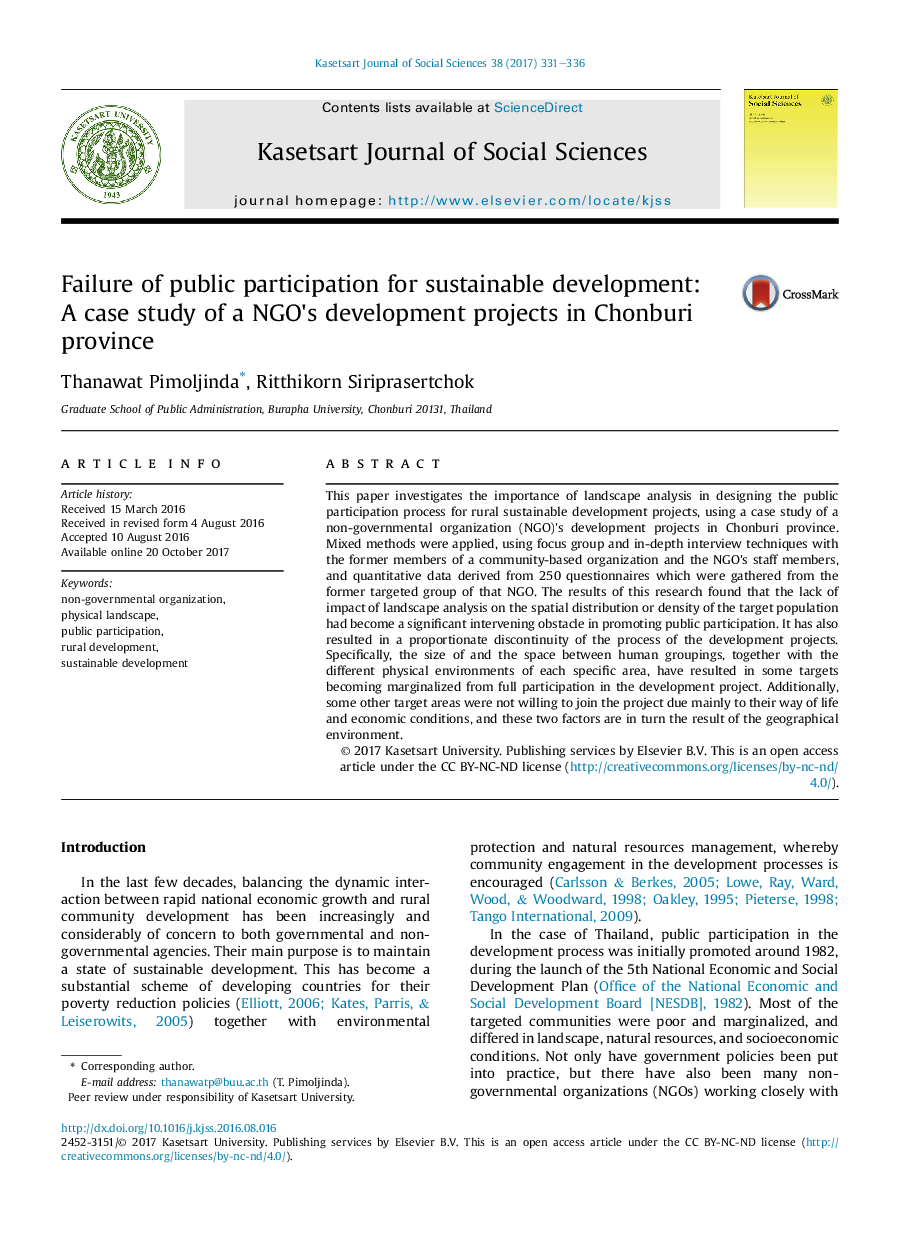| Article ID | Journal | Published Year | Pages | File Type |
|---|---|---|---|---|
| 6844036 | Kasetsart Journal of Social Sciences | 2017 | 6 Pages |
Abstract
This paper investigates the importance of landscape analysis in designing the public participation process for rural sustainable development projects, using a case study of a non-governmental organization (NGO)'s development projects in Chonburi province. Mixed methods were applied, using focus group and in-depth interview techniques with the former members of a community-based organization and the NGO's staff members, and quantitative data derived from 250 questionnaires which were gathered from the former targeted group of that NGO. The results of this research found that the lack of impact of landscape analysis on the spatial distribution or density of the target population had become a significant intervening obstacle in promoting public participation. It has also resulted in a proportionate discontinuity of the process of the development projects. Specifically, the size of and the space between human groupings, together with the different physical environments of each specific area, have resulted in some targets becoming marginalized from full participation in the development project. Additionally, some other target areas were not willing to join the project due mainly to their way of life and economic conditions, and these two factors are in turn the result of the geographical environment.
Related Topics
Social Sciences and Humanities
Economics, Econometrics and Finance
Economics, Econometrics and Finance (General)
Authors
Thanawat Pimoljinda, Ritthikorn Siriprasertchok,
